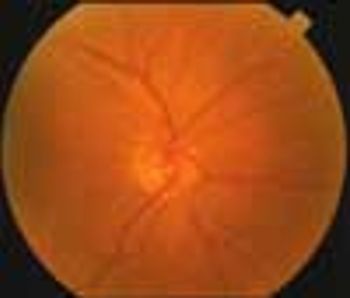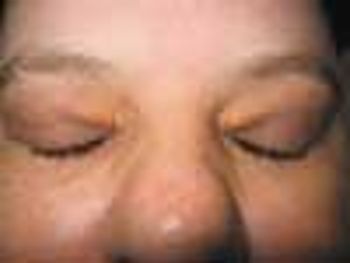
LOS ANGELES - Sleeping well, plus behavioral modification techniques, may be a start toward relieving the chronic, daily headaches called transformed migraine, researchers said here.

LOS ANGELES - Sleeping well, plus behavioral modification techniques, may be a start toward relieving the chronic, daily headaches called transformed migraine, researchers said here.

LOS ANGELES ? Children with headaches are more likely to be overweight or obese, researchers said here.

LOS ANGELES - During the last three months of their tours of duty in Iraq, U.S. soldiers were prone to twice as many migraines as the general population, according to army researchers.

LOS ANGELES - Patients can sense a migraine coming on even before it strikes, and they are almost always on target, even if the diagnostic symptoms they use differ from clinicians' criteria, researchers said here.

LOS ANGELES - If all else fails individually, throw the kitchen sink at some patients with migraine, recommends an Ohio investigator.

LOS ANGELES, June 26 - An anti-seizure agent can reduce the frequency of chronic migraine events, according to a researchers here.

LOS ANGELES ? When applied during the aura phase of migraine, two pulses from an investigational transcranial magnetic stimulator reduced some symptoms in 69% of patients, according to a pilot study reported here.

A 15-year-old boy complains of moderate to severe headaches that occur daily and usually last all day; the pain typically worsens toward the end of the day. How will you help this patient?

Syncope is defined as a sudden, brief loss of consciousness and postural tone followed by spontaneous complete recovery. It accounts for 3% of emergency department visits and 1% of hospital admissions.

Osteoporosis is no longer consideredage- or sex-dependent, although prevalencevaries by sex and race. Postmenopausalwhite women suffer almost75% of all hip fractures and havethe highest age-adjusted rate of fracture.Thanks to progress in our understandingof causes and treatments, thisdisease is largely preventable, and significantimprovements in morbidityand mortality are possible. The beststrategy for prevention and treatmentuses a team approach that involves thepatient, physician, health educators, dietitians,and physical therapists.

The patient presented with left-sided, throbbing headaches that had gradually increased in severity and frequency. These headaches, which occurred once or twice a month, were associated with photophobia, phonophobia, and nausea, and usually lasted 8 to 12 hours. The headaches affected the patient's job performance and attendance, and she complained of fatigue, lack of sleep, and difficulty in concentrating.

A 36-year-old man with a 15-year history of episodic migraine presents to the emergency department (ED) at 5 AM witha right-sided throbbing headache of 4 hours' duration. The headache awakened him, which is typical of his more severemigraine attacks. Unfortunately, the patient forgot to refill his prescription for pain medication and did not "catch" thisheadache in time. He took an over-the-counter combination of aspirin and caffeine, which seemed to help for about 60minutes, but the headache has returned full force. He has vomited twice-another characteristic typical of his migraineattacks

I suspect that my patient has hereditary angioedema (HAE). During her lastpregnancy 2 years earlier, she had severe preeclampsia.

This is a difficult question, because most "sinus headaches" are migraines.1-3 In fact, there is no such thing as a sinus headache. The International Headache Society (IHS) defines a headache attributable to rhinosinusitis according to the criteria listed in Table 1.4 This requires a diagnosis of acute rhinosinusitis and a headache that occurs at the same time.

What are the current recommendations for hormonal contraception (eg, oralcontraceptives, medroxyprogesterone injections) in patients with migraine?

A 36-year-old man who had collapsedand sustained a bruised right shoulderwas brought to the emergency departmentwith acute emesis, cephalgia,blurred vision, aphasia, and righthemiparesis. He was confused but ableto follow simple commands.

A neurologic deficit caused by a transient ischemic attack should last less than 24 hours. This woman presented with signs of paresis that had persisted for 36 hours, thus ruling out transient ischemic attack.

Most primary care practitioners approach the patient who complains of dizziness with some trepidation. This is chiefly because the differential diagnosis involves multiple organ systems and a wide variety of disorders. In this article, I offer a rational, straightforward, and cost-effective approach that uses only minimal, selective diagnostic testing.

A 71-year-old man presented with a 6-week history of decreased vision in his right eye. The patient, who had hypertension and migraine headaches, had successfully recovered from a stroke that occurred 1 year earlier. His medications included aspirin, 81 mg/d, clopidogrel, atenolol, and furosemide. He also took gabapentin, 300 mg hs, for his migraine headaches. He had a remote history of cigarette smoking.

What are the current recommendations for the use of corticosteroids in the treatment of migraine? Is this a therapy primary care clinicians might consider?

Read the cases of 4 patients whose chief complaint is a 2-week history of neck pain, try your hand at making a quick diagnosis, then go to the next page to read the outcome.

The use of analgesics, specifically acetaminophen, has been proposed as one of the mechanisms for the rise in asthma prevalence in the last 30 to 40 years.1 Acetaminophen, approved by the FDA in 1951, is one of the most commonly used analgesics in adults and children. The association between asthma and acetaminophen has been reported in case reports, in the setting of oral challenge tests, and in larger clinical studies.2

A 24-year-old woman complains of a severe, throbbing headache that is present when she is upright and is relieved when she lies down. When she is upright, she also experiences dizziness, blurred vision, light sensitivity, nausea, and occasional diplopia.

A physician who has chronic daily headaches is concerned that his alprazolam regimen (0.5 mg of alprazolam nightly) may be considered "excessive use."

These yellow asymptomatic lesions on the inner upper eyelids of a 36-year-old woman had persisted for 2 years. She had a history of type 2 diabetes mellitus, migraine, nicotine dependence, bipolar disorder, and obesity. Her medications included quinapril, insulin aspart injection, sumatriptan, ziprasidone, and temazepam.